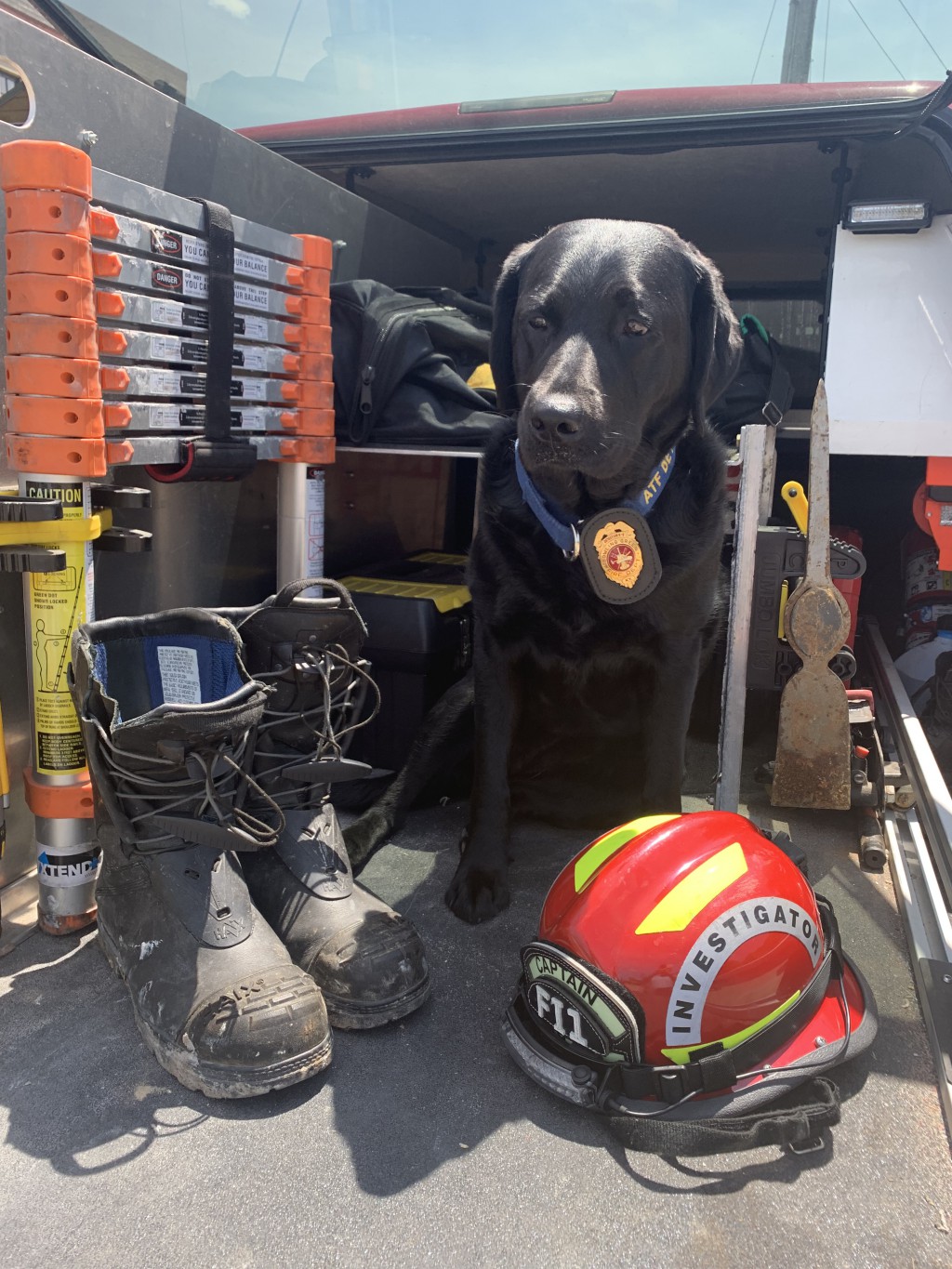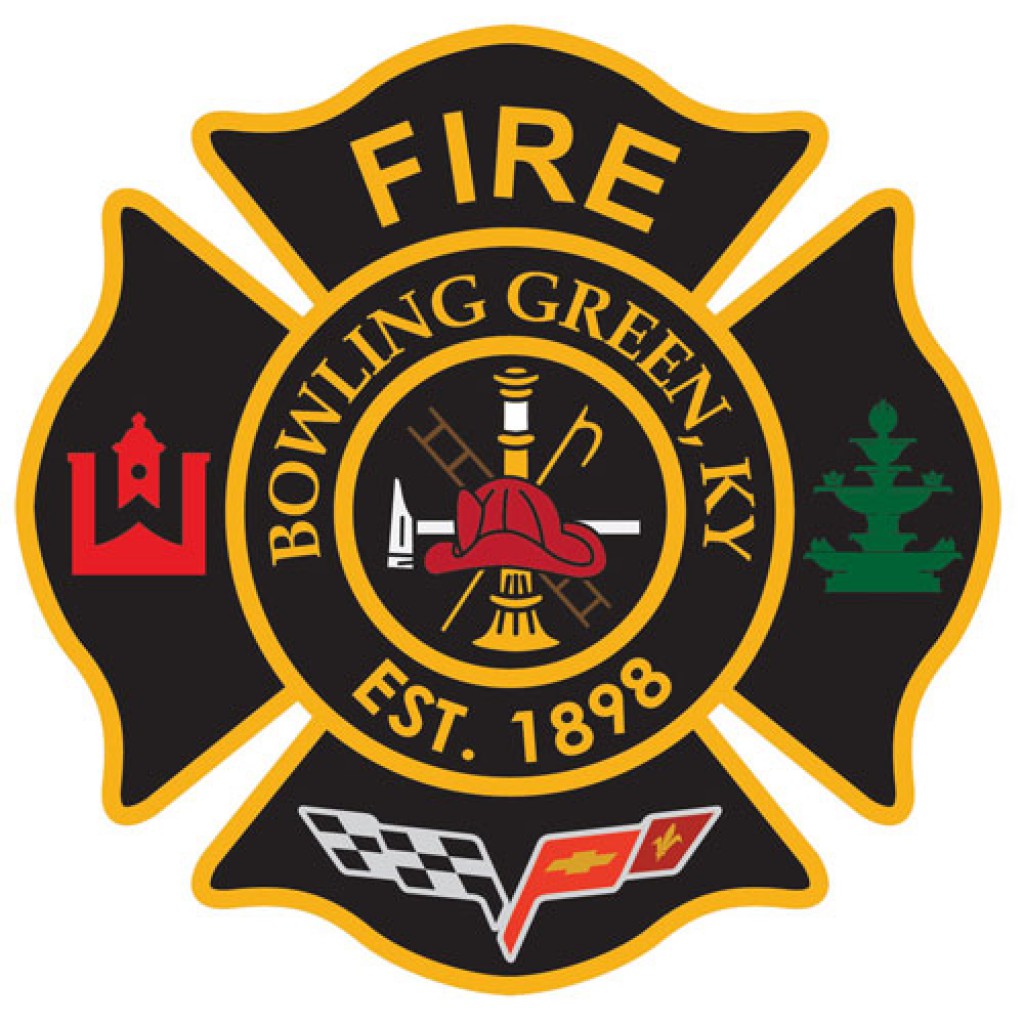Accelerant Detection Canine
Millie is a Bureau of Alcohol, Tobacco, Firearms and Explosives (ATF) Accelerant Detection Canine assigned to the Bowling Green Fire Department. Millie is a black Labrador Retriever that was born in May 2016 and was introduced to and trained with her handler, BGFD Fire Investigator, Captain Michael Cornwell, in the fall of 2018 at the ATF’s Accelerant Detection Canine (ADC) Handling School in Virginia. Captain Cornwell, like all potential handlers, had to apply for the school several months in advance and then be selected by the ATF in order to attend.
Over the course of the six-week ADC school, Captain Cornwell and Millie learned to work together to identify evidence at fire scenes. Since Millie can detect hundreds of substances within 6 different categories of accelerants, she’s an extremely reliable detection resource. Before Millie, an investigator had to use burn patterns, melting temperatures and experience in deciding where and how many fire debris samples should be taken at a fire scene. But now, because Millie will alert when she senses an accelerant, fewer fire debris samples can be taken at the scene, thereby reducing the cost of testing unnecessary debris samples.
Millie lives with Captain Cornwell and his family. She is loved on and played with just like any other family pet with the exception of her feedings. She is a food reward dog, which means she must work to be fed. No one feeds her except her handler and she is only fed after she has alerted on accelerants, either through daily training scenarios or on fire scenes.
Of the approximately 54 ATF accelerant detection canine teams, Captain Cornwell and Millie are the only one in the state of Kentucky. Each canine team must recertify with ATF every year to ensure they are still working well together and Captain Cornwell and Millie won the Top Dog Award in 2019, which is a rigorous competition between all ATF canine teams each year.
Millie not only works at fire scenes but also is involved in helping to teach fire safety and educating groups about various careers in the fire service. She is easily the most popular member of our department. Most accelerant detection canines work until they are 8 or 9 years old and then are usually given to their handler when the canine retires.

Let us know if anything is wrong with this page. However, please don't include any personal or financial information.

